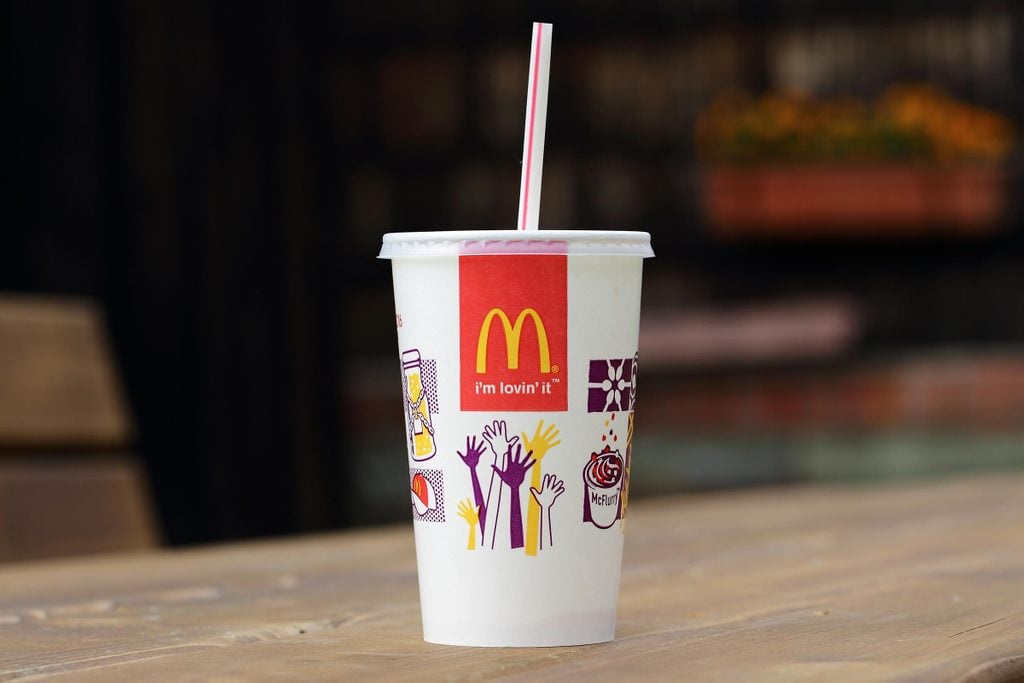The Real Reason McDonald’s Won’t Call Its Shakes ‘Milkshakes’
Updated: Jan. 05, 2024

Is there any truth behind the rumor that they're suspiciously dairy-free?
McDonald’s has had its fair share of controversies over the years. From claims that its McNuggets were made of “pink slime” to (false) reports that its burgers are made with horse or even human meat, the fast-food chain just can’t escape finger-pointing from customers who can’t believe its food is natural.
The dessert menu certainly isn’t immune to the skepticism, with plenty of eagle-eyed customers pointing to the fact that McDonald’s most famous dessert item, shakes, is missing a keyword. If they aren’t milkshakes, it must mean they’ve replaced milk and ice cream with non-dairy, totally unnatural fillers… right?
Skip the drive-through and make these McDonald’s copycat recipes at home.
What’s in a McDonald’s shake?
Let’s get one thing straight: McDonald’s shakes do contain milk. No matter what flavor you order, the first ingredient is reduced-fat vanilla ice cream, and the first ingredient of that is milk, followed by sugar, cream, corn syrup and a handful of additives. That ice cream base is mixed with flavor syrup and topped with whipped cream before it’s served.
Check out these other fast food “facts” that are actually false.
Why aren’t they called milkshakes?
So far so good, but McDonald’s still chooses to call the dessert “shakes” for the sake of simplicity. The company clarifies on its website: “Dairy regulations actually vary from state to state on what can officially be called a ‘milkshake.’ We like to keep it simple and refer to them strictly as ‘shakes.’”
Well that… sort of clears things up. Don’t get too worked up about the regulations McDonald’s refers to—a lot has to do with milkfat content.
In Connecticut, for instance, a true “milkshake” has to contain between 3.25 and 6 percent milkfat, and the non-fat milk solids can’t be less than 10 percent; in South Dakota, meanwhile, milkshakes should be between 2 and 7 percent milkfat, with at least 23 percent total solids. New York has different definitions for “dairy shake” vs. “freezer-made milk shake.”
On top of all that, in Massachusetts, there might be no legal definition. But socially speaking, a “milkshake” is just milk mixed with syrup (no ice cream) and what the rest of the country calls a “milkshake” would be called a “frappe.” You see where things get confusing for a national chain.
To solve another mystery, learn why McDonald’s won’t serve burgers in the morning.
How much milkfat is in a shake?
We can see those wheels turning in your head. Dairy regulations are all about the milkfat content, and this is McDonald’s we’re talking about, which must mean its ice cream is too fatty to be considered a milkshake! Actually, it might be the opposite.
American McDonald’s wouldn’t clarify the milkfat in its ice cream or shakes over email to Reader’s Digest, but Canadian McDonald’s seems to have a similar recipe and provides a more cut-and-dry explanation about its dairy desserts on its website: “Our vanilla soft serve is technically considered ‘ice milk.’ Ice milk has a lower butterfat (milkfat) content. That makes it a lighter and airier dairy treat than ice cream.”
And, McDonald’s is far from the only chain taking the “milk” out of its milkshakes (in the name, that is). Mickey D competitor Burger King also serves up “shakes,” and so do Arby’s, Sonic and even Shake Shack. If you want a milkshake with the emphasis on milk, you can find one at Chick-fil-A or Five Guys. But as long as it tastes good, we aren’t complaining.
If you’re still on the hunt for the perfect combination of cool, creamy and sweet, learn how to make a milkshake at home.
For more frozen dessert fun facts, learn all the things you never knew about the Wendy’s Frosty.